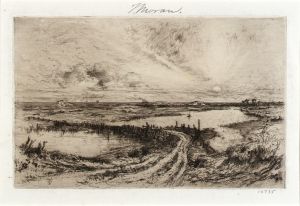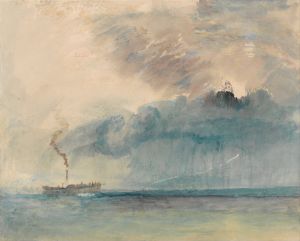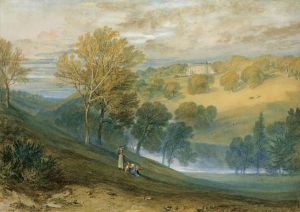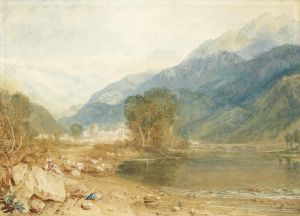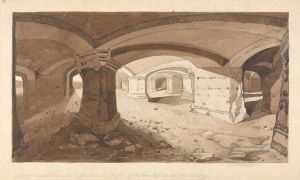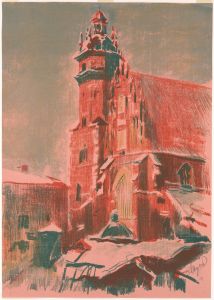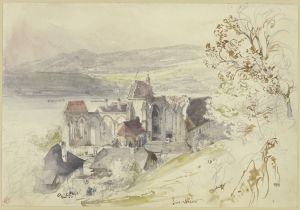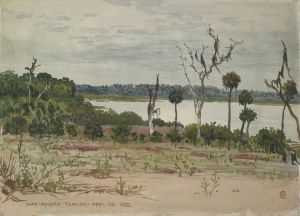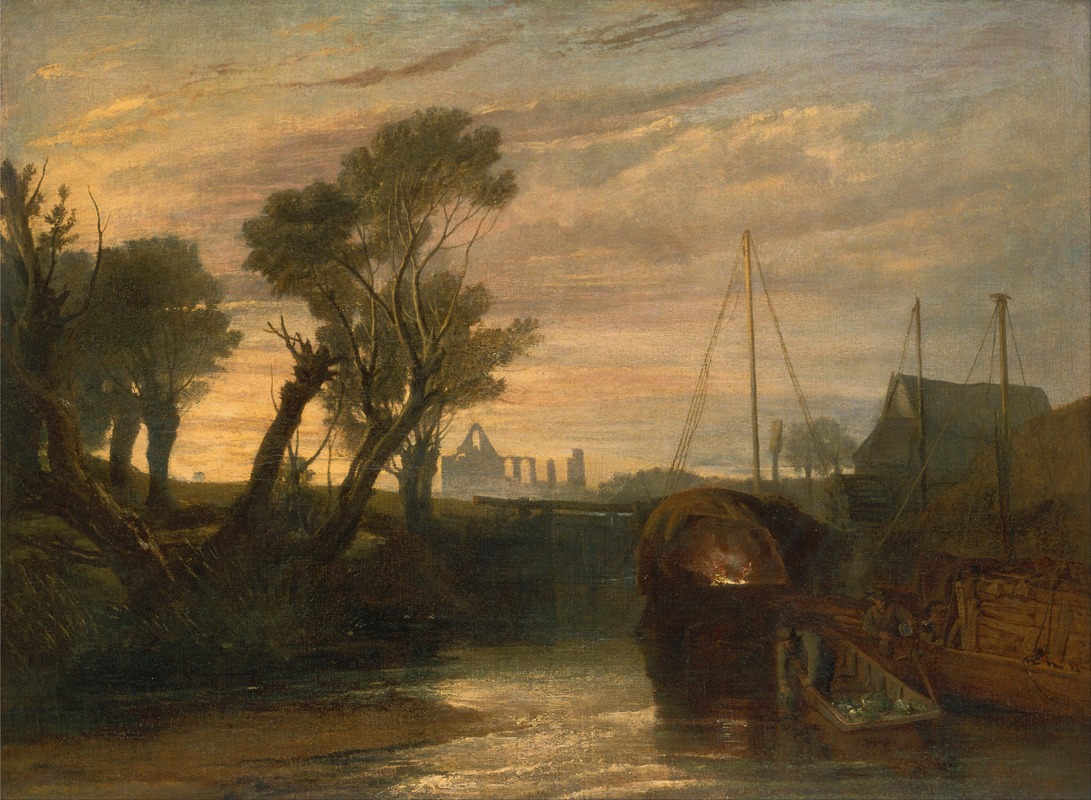
Newark Abbey
A hand-painted replica of Joseph Mallord William Turner’s masterpiece Newark Abbey, meticulously crafted by professional artists to capture the true essence of the original. Each piece is created with museum-quality canvas and rare mineral pigments, carefully painted by experienced artists with delicate brushstrokes and rich, layered colors to perfectly recreate the texture of the original artwork. Unlike machine-printed reproductions, this hand-painted version brings the painting to life, infused with the artist’s emotions and skill in every stroke. Whether for personal collection or home decoration, it instantly elevates the artistic atmosphere of any space.
Joseph Mallord William Turner, one of the most renowned British artists of the 19th century, is celebrated for his expressive colorization, imaginative landscapes, and turbulent marine paintings. Among his extensive body of work, "Newark Abbey" is a painting that reflects his fascination with historical architecture and the interplay of light and atmosphere.
Turner was born in 1775 in London and showed an early aptitude for art, enrolling in the Royal Academy of Arts at the age of 14. Throughout his career, he traveled extensively across Britain and Europe, drawing inspiration from the landscapes and historical sites he encountered. His works often depict the sublime beauty of nature, capturing the transient effects of light and weather.
"Newark Abbey" is one of Turner's many works that focus on architectural ruins, a popular subject during the Romantic period. The painting depicts the remains of Newark Priory, a former Augustinian abbey located near Ripley in Surrey, England. The priory was founded in the late 12th century and was dissolved during the reign of Henry VIII as part of the wider Dissolution of the Monasteries. By Turner's time, the abbey was in ruins, a poignant reminder of England's tumultuous religious history.
In this painting, Turner employs his signature style to convey the atmospheric conditions surrounding the abbey. His use of light and shadow, combined with a delicate color palette, creates a sense of both nostalgia and mystery. The ruins are set against a backdrop of a vast sky, with clouds that seem to move across the canvas, suggesting the passage of time and the enduring nature of the landscape compared to human constructs.
Turner's treatment of Newark Abbey reflects his broader interest in the themes of decay and the passage of time, common motifs in his work. His ability to evoke emotion through his depiction of ruins speaks to the Romantic ideal of finding beauty in the sublime and the transient. The painting is not just a representation of a historical site but also an exploration of the relationship between nature and human history.
Throughout his career, Turner was known for pushing the boundaries of traditional landscape painting. His innovative techniques and bold use of color influenced many later artists, including the Impressionists. Turner's works are characterized by their dynamic compositions and the way they capture the ephemeral qualities of light and atmosphere.
"Newark Abbey" is a testament to Turner's skill in capturing the essence of a place and moment in time. While the specific details of the painting's creation, such as the exact date and circumstances, may not be well-documented, the work itself remains an important part of Turner's legacy. It exemplifies his ability to blend historical subject matter with his unique artistic vision, creating a work that resonates with viewers both in his time and today.
Turner's paintings, including "Newark Abbey," continue to be celebrated for their emotional depth and technical mastery. They are housed in major collections around the world, including the Tate Britain in London, which holds the largest collection of Turner's works. His influence on the art world is undeniable, and his paintings remain a source of inspiration and admiration for artists and art lovers alike.





